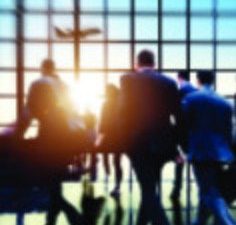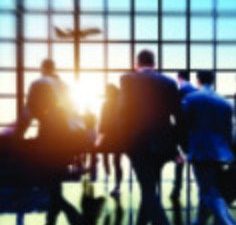The summer of discontent
February 1, 2017

Back in the spring of 2016, an Ipsos survey was released that measured the satisfaction of US passengers with their air travel experiences during the previous year. The poll of over 3,000 adults, conducted for the aviation trade group Airlines for America, found that 80 percent of respondents were ‘satisfied’ with their air travel experience, including 35 percent going so far as to say they were ‘very satisfied.’
According to the research, respondents said that the three most important factors in airline service are price, convenience and reliability. Thus while we may grouse about the expense of flying these days, the fact is that when weighted for inflation, airlines tickets cost far less now than they did decades ago. As for the convenience factor, A4A cites the growing use of web-based and mobile technology through which one can shop, purchase and execute the flying decision.
Which brings us to the subject of reliability. Given the complexity of the system, this is perhaps the most volatile line item in sizing up airline performance, and for the general flying public, the one with the most immediate impact. So we follow with great interest the Air Travel Consumer Report compiled by the DOT’s Bureau of Transportation Statistics, which tabulates delays, cancellations, lost bags, mistreated pets, and other factors which contribute to passenger satisfaction or lack thereof.
Throughout the first half of 2016 we were impressed with the seeming inexorable improvement in the numbers US carriers were putting up. That is, until July came. Anyone who was caught flying this past summer will undoubtedly recall the hours of disruptions and delays. Where previous months had seen few reported tarmac delays of three-hours plus, BTS logged nearly a dozen on domestic flights and another 10 on international service in July; on-time percentages fell almost three full points and cancellation rates nearly doubled.
No doubt any survey fielded in July would have seen the importance of reliability go up and satisfaction levels drop. But perhaps more critical than the impact on customer satisfaction scores were the consequences for the travel industry’s bottom line. According to a more recent report from airline IT consultancy Travel Technology Research Ltd, disruptions cost travel providers some 8 percent of their global revenues, or about $60 billion a year.
The T2RL report, Airline Disruption Management, sponsored by travel technology firm Amadeus, found that disruption spreads ‘virally’ throughout the travel network. Often a relatively minor initial problem can cascade throughout the system with planes and crews not arriving as scheduled.
The good news is that the industry is turning its attention to the problem, driven in part by consumer regulations, lost sales opportunities and that $60 billion price tag. As a result, new technology, better data and improved communications may yield tools to significantly reduce the drag that disruptions place on the industry and on its customers.
“There is every reason to believe the historic challenge of re-routing planes, crew and passengers during disruption will finally be addressed over the next several years,” says Ira Gershkoff, principal consultant at T2RL and the report’s author. “What’s important is that service providers are collaborating across the entire industry to mitigate the impact on the traveler.”
As one of the millions affected by the ‘operational challenges’ of last July, I can only applaud efforts to bring greater consistency to travel, and reduce the hassles and complications of life on the road. It can’t some soon enough.
And while we’re at it, let’s take a look at those security lines…
By Dan Booth




